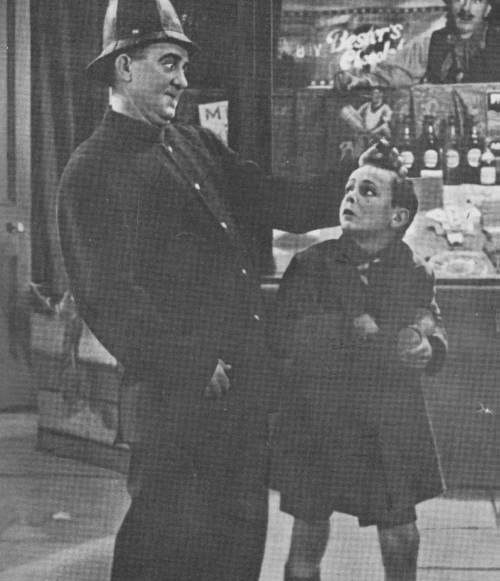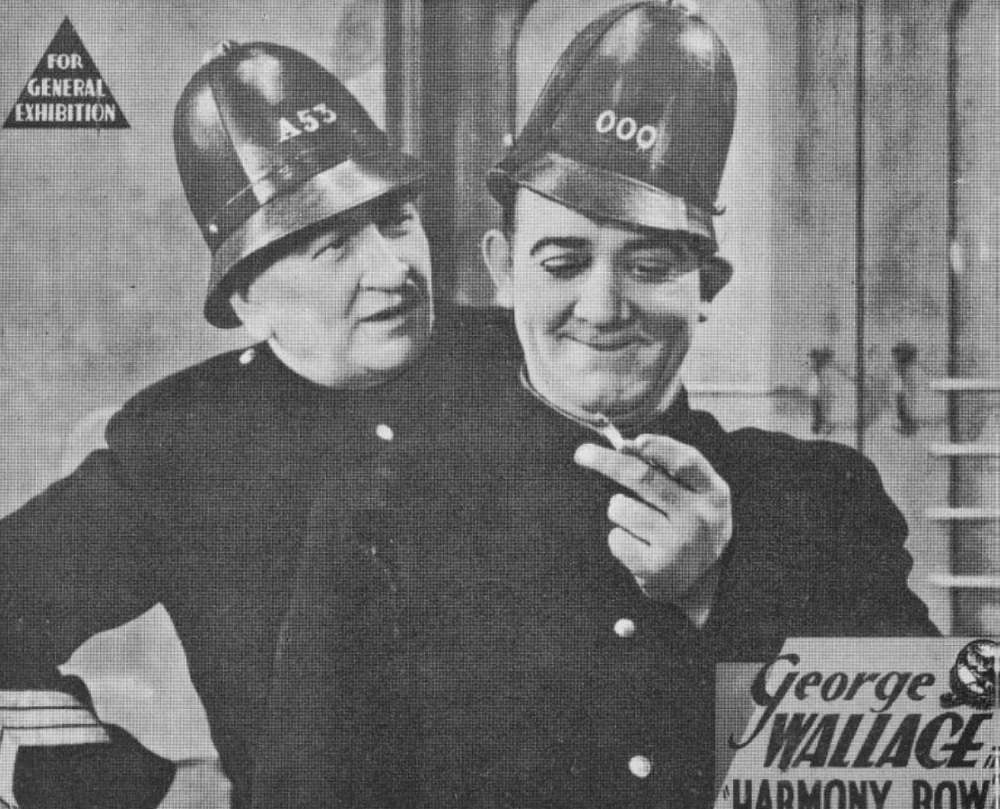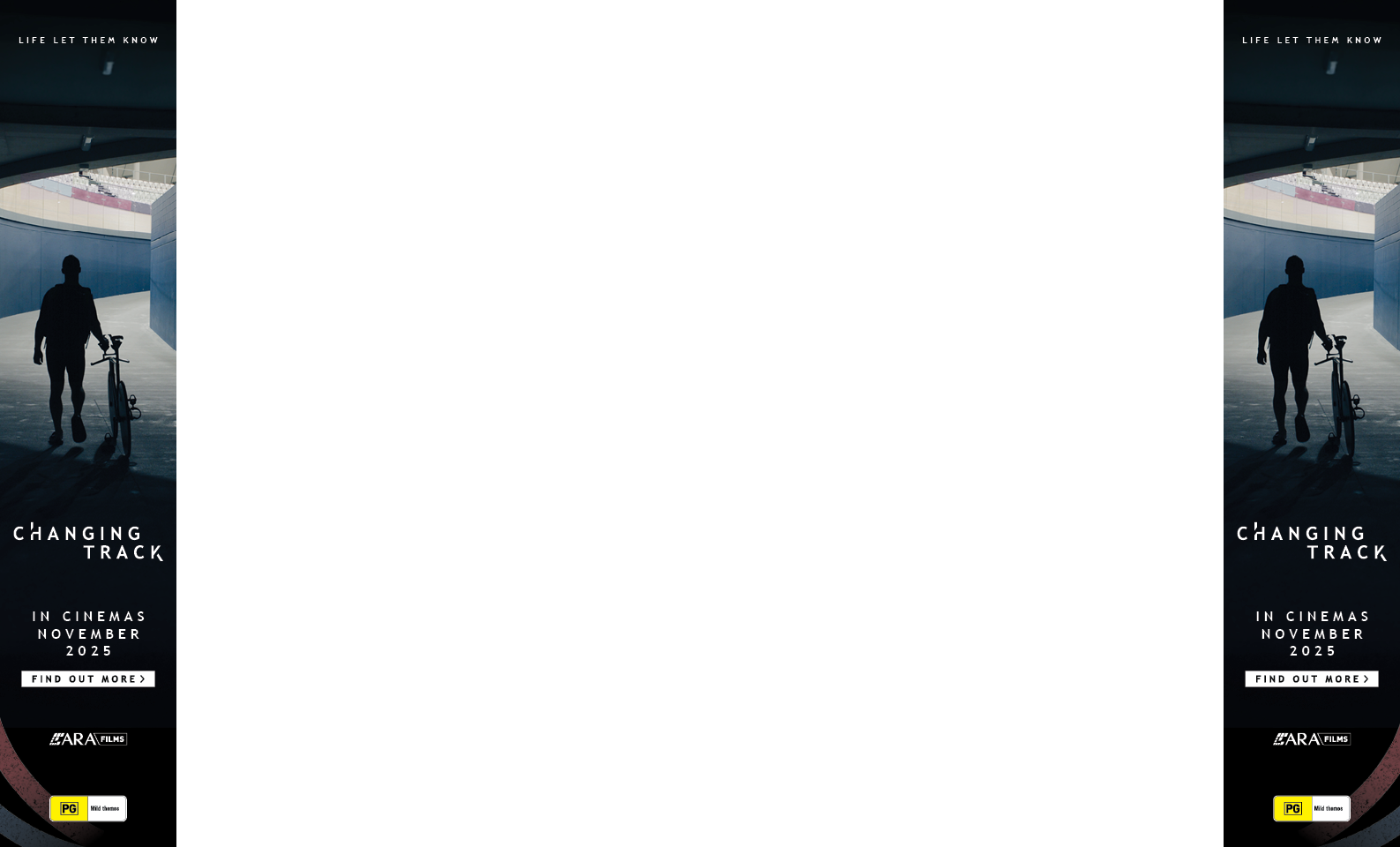by Stephen Vagg
It’s not always easy to watch old movies, even when you’re a movie buff – you’ve got to make allowances for time, place, technical limitations, slang, all that. And sometimes, it must be admitted, old movies aren’t very good.
Harmony Row is one of those. We know that this series is meant to be celebratory for forgotten Australin films but that doesn’t mean we want to lie – we’ve certainly covered some turkeys, like White Death and Strike Me Lucky. Still, most old movies have some worth and Harmony Row falls into that category, especially for Australians.
It was a star vehicle for vaudevillian George Wallace, a huge name in pre-World War Two Australian stage entertainment. We’ve discussed him previously in this series in pieces on his late ‘30s vehicles Let George Do It and Gone to the Dogs, during which we’ve mentioned his first three features, for F.W. Thring, of which Harmony Row was the second; the other two were His Royal Highness and A Ticket in Tatts. Wallace also made a short film for Thring, Oh! What a Night, and starred in the feature Sheepmates which was abandoned during filming, and appeared in stage musicals for him like Collitts’ Inn. So, basically, F.W. Thring = big fan of Wallace.
Harmony Row was based on a stage show that Wallace performed in the 1920s. He wrote it himself, incidentally – most successful Australian comics, from Barry Humphries and Paul Hogan to Kitty Flanagan, write or co-write their own material (though, you did get your occasionally “pure actor” comic stars like Cecil Kellaway, who we discussed here).
Wallace’s typical formula was to take a character played by himself, a little Aussie battler, and plunk him in some situation where he could cause mayhem – a royal court, a race track, etc. In Harmony Row, he becomes a police officer. The plot is really a series of comic encounters – George runs into crooks, then a haunted house, then has a boxing match. You could really shuffle the order of the scenes around and be none the wiser.
 Is it funny? Well, yes, if you like George Wallace. The pacing is a little off, as if the actors are waiting for audience laughter. The best sequence is the climactic boxing match between Wallace and John Dobbie – that’s very funny, in part because it feels more devised for the screen (though it was in the stage show). It’s not as good as George Wallace’s later films for Cinesound, where the star could rely on director Ken G. Hall and writer Frank Harvey, who generally made better films than Thring (though Harvey and Thring collaborated on movies such as Clara Gibbings). If Harmony Row had been made at Cinesound in the late ‘30s, it would have had things like a more cohesive plot, stronger love story, and better narrative drive towards the climax. Harmony Row has all the ingredients to be a very good movie – subplots about a girl (Phyllis Baker) with a dodgy brother, the local cop (Marshall Crosby) who is also head of criminals, a little kid who’s a crook (Willie Kerr, who grew up to be Bill Kerr, sidekick to Tony Hancock and the yelly old man in ‘80s films like Gallipoli and Razorback) – but it’s not shaped. In fairness, Thring may have learned these things if he’d lived longer.
Is it funny? Well, yes, if you like George Wallace. The pacing is a little off, as if the actors are waiting for audience laughter. The best sequence is the climactic boxing match between Wallace and John Dobbie – that’s very funny, in part because it feels more devised for the screen (though it was in the stage show). It’s not as good as George Wallace’s later films for Cinesound, where the star could rely on director Ken G. Hall and writer Frank Harvey, who generally made better films than Thring (though Harvey and Thring collaborated on movies such as Clara Gibbings). If Harmony Row had been made at Cinesound in the late ‘30s, it would have had things like a more cohesive plot, stronger love story, and better narrative drive towards the climax. Harmony Row has all the ingredients to be a very good movie – subplots about a girl (Phyllis Baker) with a dodgy brother, the local cop (Marshall Crosby) who is also head of criminals, a little kid who’s a crook (Willie Kerr, who grew up to be Bill Kerr, sidekick to Tony Hancock and the yelly old man in ‘80s films like Gallipoli and Razorback) – but it’s not shaped. In fairness, Thring may have learned these things if he’d lived longer.

Is Harmony Row worth seeing? If you are interested in 1920s/’30s Australian popular culture, absolutely. The slang, the depiction of the working class, the fact that it captures a leading comic in his prime. But you do have to make allowances for it. Quite a few.
The film did alright at the box office and if it had been better, it might have done very well, like Wallace’s late ‘30s movies. The movie was reviewed in Variety by some clown who thought the movie needed an American or British director: the sort of knee-jerk, dribbling, fore locking tugging idiotic analysis that plagued Australian movies, and continues to plague it. What it needed was a better director, not a foreign one, and a stronger script.
It’s a very loose script, with plenty of scope for improvisations – suggesting Wallace speak to the audience, and the final boxing match is described as “and now the boxing match takes place”. We wonder who wrote the script, it’s not credited.
Here’s the movie for you to see for yourself:




